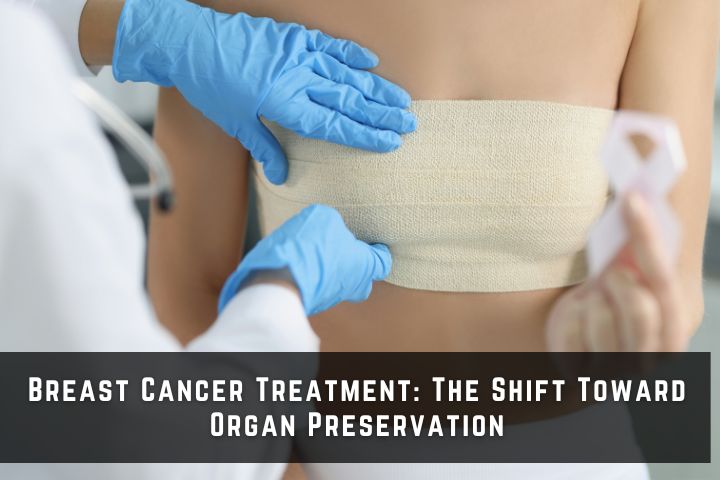Breast Cancer Treatment: The Shift Toward Organ Preservation
Over the past few decades, the landscape of breast cancer treatment has undergone a remarkable transformation. Once, mastectomy — the complete removal of the breast — was considered the standard treatment for most patients. Today, with advances in surgical precision, imaging, and targeted therapies, more women are being offered organ-preserving options that not only save lives but also protect confidence, identity, and quality of life.
This shift toward breast-conserving therapy (BCT) represents a blend of scientific progress and compassionate care, giving women hope for both survival and wholeness.
1. The Evolution from Mastectomy to Breast Conservation
Historically, breast cancer surgery was radical. In the early 20th century, the Halsted mastectomy, which involved removing the breast, underlying muscles, and lymph nodes, was the norm. While effective at the time, it often left patients physically and emotionally scarred.
However, decades of clinical research and technological advancement have led to a paradigm shift. Studies have shown that lumpectomy — removing only the tumor and a small margin of healthy tissue — combined with radiation therapy can be just as effective as mastectomy for early-stage breast cancer.
Modern screening techniques, like digital mammography, MRI, and 3D imaging, allow for earlier and more accurate tumor detection. This makes it possible to catch cancers at a stage where breast-conserving surgery is safe and effective.
Today, with the help of intraoperative margin assessment and onco-plastic surgical techniques, surgeons can remove cancer while maintaining the natural shape and appearance of the breast — marking a monumental evolution in patient-centered cancer care.
2. Advanced Therapies Supporting Organ Preservation
The shift toward organ preservation isn’t limited to surgery alone. Advances in systemic therapies — including targeted therapy, hormonal therapy, and immunotherapy — have transformed how breast cancer is treated before and after surgery.
In many cases, neoadjuvant therapy (treatment given before surgery) helps shrink tumors significantly, making lumpectomy possible even for cancers that initially seemed too large for preservation. Targeted therapies, such as those aimed at HER2-positive breast cancers, have produced dramatic tumor responses, allowing for less invasive surgeries.
Radiation therapy has also become more precise, thanks to technologies like Intensity-Modulated Radiation Therapy (IMRT) and Proton Therapy, which deliver radiation directly to the tumor while sparing surrounding healthy tissue. This means better outcomes, fewer side effects, and greater preservation of the breast.
Together, these multimodal strategies ensure that patients not only survive but thrive — with treatments designed to eliminate cancer while preserving beauty, function, and self-esteem.
3. The Emotional and Aesthetic Value of Preservation
For many women, breast preservation is not just a medical choice — it’s deeply emotional. The breast symbolizes femininity, motherhood, and identity. Losing it can cause profound psychological distress. By focusing on organ-preserving treatments, modern oncology acknowledges the importance of emotional healing alongside physical recovery.
Oncoplastic surgery, which combines cancer removal with reconstructive techniques, has become a vital part of this approach. Surgeons work not only to remove the disease but also to restore symmetry and aesthetics, often during the same procedure. This holistic focus improves post-treatment confidence and quality of life.
Moreover, the integration of psychological counseling, rehabilitation, and support groups ensures that patients are cared for in every dimension — physical, emotional, and mental. The result is a compassionate, whole-person approach to cancer treatment that empowers women to move forward with strength and dignity.
Comprehensive Breast Cancer Care at Dr. A.V. Cancer Institute
At Dr. A.V. Cancer Institute, we are proud to be at the forefront of breast cancer organ-preserving treatment. Our multidisciplinary team combines expertise in oncology, surgery, radiology, and reconstructive care to provide every patient with a personalized treatment plan.
Using the latest advancements in targeted therapy, minimally invasive surgery, and onco-plastic reconstruction, we ensure that our patients achieve the best medical and aesthetic outcomes possible.
With world-class technology, compassionate care, and a patient-first philosophy, Dr. A.V. Cancer Institute provides the best services in breast cancer diagnosis, treatment, and preservation, helping women live healthy, confident, and fulfilling lives.
Because every woman deserves not just survival — but wholeness, strength, and dignity.

